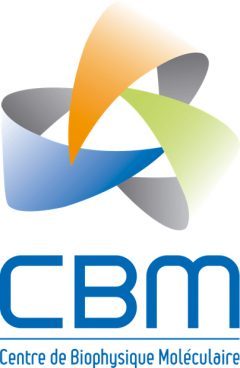Research theme
The global goal of the "Luminescent lanthanide compounds, optical spectroscopy and bioimaging" team is to provide new reagents and tools (luminescent reagents and oligonucleotides) for biological analysis and imagery. It combines expertise in organic and inorganic synthesis, visible and near-infrared spectroscopy (absorbance and luminescence), biochemistry, cellular and small animal imaging.
Luminescent Reporters and Sensors Based on Lanthanide for Biological Imaging
The creation of novel luminescent reporters and sensors based on lanthanide cations emitting in the visible and in the near-infrared is one of the major component of the research program. Our objective is to design, synthesize and study lanthanide complexes and materials which possess novel or improved luminescence properties that address requirements of analysis in biological conditions where a significant fluorescent background is present. In addition, we test and use the resulting reporters in practical applications such as bioanalytical assays and imagery at the cellular and small animal levels.
Our long term goal is to expand the field of application of lanthanide compounds by synthesizing antennae that will allow us to sensitize a larger number of lanthanide cations with more diverse emission wavelengths and to create novel types of reporters and sensors suitable for the detection of biological molecules and biological activity. This specifically includes the development of near-infrared (NIR) emitting lanthanide compounds. In order to generate the luminescence of lanthanide, these cations must be sensitized by an “antenna”. This entity must harvest as many photons as possible and transfer the resulting energy to the lanthanide cations. Quest for novel antenna (synthesis and rationalization of the energy transfer process) is a part of our work.
The complementary aspect of this research is the use of these compounds in practical applications with a special interest for cellular and small animal imaging. Projects also include the creation of novel equipments (microscopy and macroscopy) that will allow the use of the lanthanide compounds in these conditions. We have also interest in coupling optical and magnetic imaging agents.
To achieve these goals, we are currently investigating different families of lanthanide compounds: small molecule complexes, dendrimers, nanocrystals, metal-organic frameworks, micelles and microemulsions. Examples of these are depicted below.
In addition, the Petoud team is responsible for the optical platform at the CBM. The goal of this platform is to provide to internal and external user advanced spectroscopic instrumentation and, if required, the corresponding training to the users.
Significant publications :
- Martinić I., Eliseeva S. V. and Petoud S.
Near-infrared emitting probes for biological imaging : Organic fluorophores, quantum dots, fluorescent proteins, lanthanide(III) complexes and nanomaterials. J. Lumin. (2016) - doi : 10.1016/j.jlumin.2016.09.058 - Chow C. Y., Eliseeva S. V., Trivedi E. R., Nguyen T. N., Kampf J. W., Petoud S. and Pecoraro V. L.
Ga3+/Ln3+Metallacrowns : A Promising Family of Highly Luminescent Lanthanide Complexes That Covers Visible and Near-Infrared Domains. J. Am. Chem. Soc. 138, 5100-5109, doi : 10.1021/jacs.6b00984 (2016). - Trivedi E. R., Eliseeva S. V., Jankolovits J., Olmstead M. M., Petoud S. and Pecoraro V. L.
Highly Emitting Near-Infrared Lanthanide “Encapsulated Sandwich” Metallacrown Complexes with Excitation Shifted Toward Lower Energy. J. Am. Chem. Soc. (2014) 136, 1526-1534 - doi : 10.1021/ja4113337 - Foucault-Collet A., Shade C. M., Nazarenko I., Petoud S. and Eliseeva S. V.
Polynuclear Sm(III) polyamidoamine-based dendrimer : a single probe for combined visible and near-infrared live-cell imaging. Angew. Chem. Int. Ed. 53, 2927-2930 (2014) - doi : 10.1002/anie.201311028 (2014). - Foucault-Collet A., Gogick K. A., White K. A., Villette S., Pallier A., Collet G., Kieda C., Li T., Geib S. J., Rosi N. L. and Petoud S.
Lanthanide near infrared imaging in living cells with Yb3+ nano metal organic frameworks. Proc. Nat. Acad. Sci. (2013) 110, 17199-17204 - doi : 10.1073/pnas.1305910110
Publications from 2000 to early 2019
